Nothing transforms a workspace like a monitor, as the size and capabilities of a screen make all the difference in crafting a comfortable and efficient day. This has rightly led to a rise in ultrawide displays in company and home offices across the globe, with iiyama ProLite XCB3497WQSNPH-B1 emerging as a new, feature-rich addition to the market.
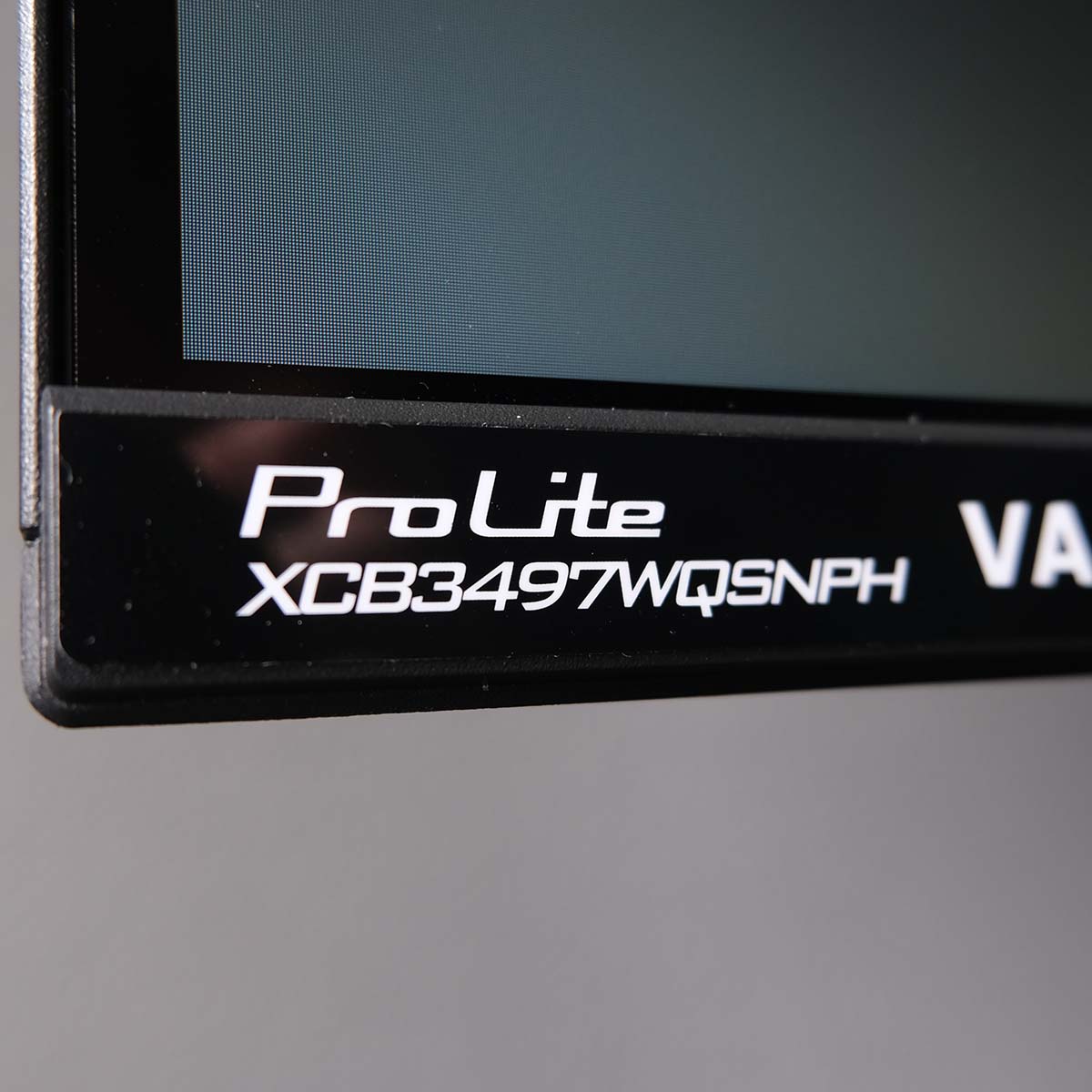

iiyama ProLite XCB3497WQSNPH-B1
£380
Pros
- UWQHD/120Hz combo
- Built-in webcam
- KVM switch & RJ45 port
- 95W power delivery
- Five-year warranty
Cons
- Colour accuracy could be better
- Confusing HDMI config
- Middling speakers
Club386 may earn an affiliate commission when you purchase products through links on our site.
How we test and review products.
Smartly evolving from the base XCB3494WQSN established a few years ago, iiyama has crafted a monitor more befitting to modern ways of working. The addition of a built-in webcam, boosts to power delivery, and more connectivity options all help elevate what was an already solid design.
Hitting the market at £380, this monitor offers plenty of value to anyone in search of an upgrade to their office screen. Such a relatively low price point for such an encompassing feature set naturally comes with some trade-offs, but the final package is undoubtedly enticing.
Specifications
| iiyama ProLite XCB3497WQSNPH-B1 | |
|---|---|
| Screen size | 34in |
| Resolution | 3440×1440 |
| Refresh rate | 120Hz |
| Response time | 0.4ms (MPRT) |
| Panel technology | VA |
| Variable refresh rate | AMD FreeSync Premium |
| HDR | N/A |
| Ports | 3.5mm headphone output (x1) DisplayPort 1.4 (x1) HDMI 1.4 (x1) HDMI 2.0 (x1) RJ45 (x1) USB-A 5Gb/s (x2) USB-B upstream (x1) USB-C 5Gb/s (x2) USB-C 5Gb/s w/ 95W PD, DP Alt, LAN (x1) |
| Speakers | 5W (x2) |
| Features | 5MP webcam w/ built-in microphone, Windows Hello support KVM switch |
| Warranty | Five years |
| Price | £380 |
Design
Chassis
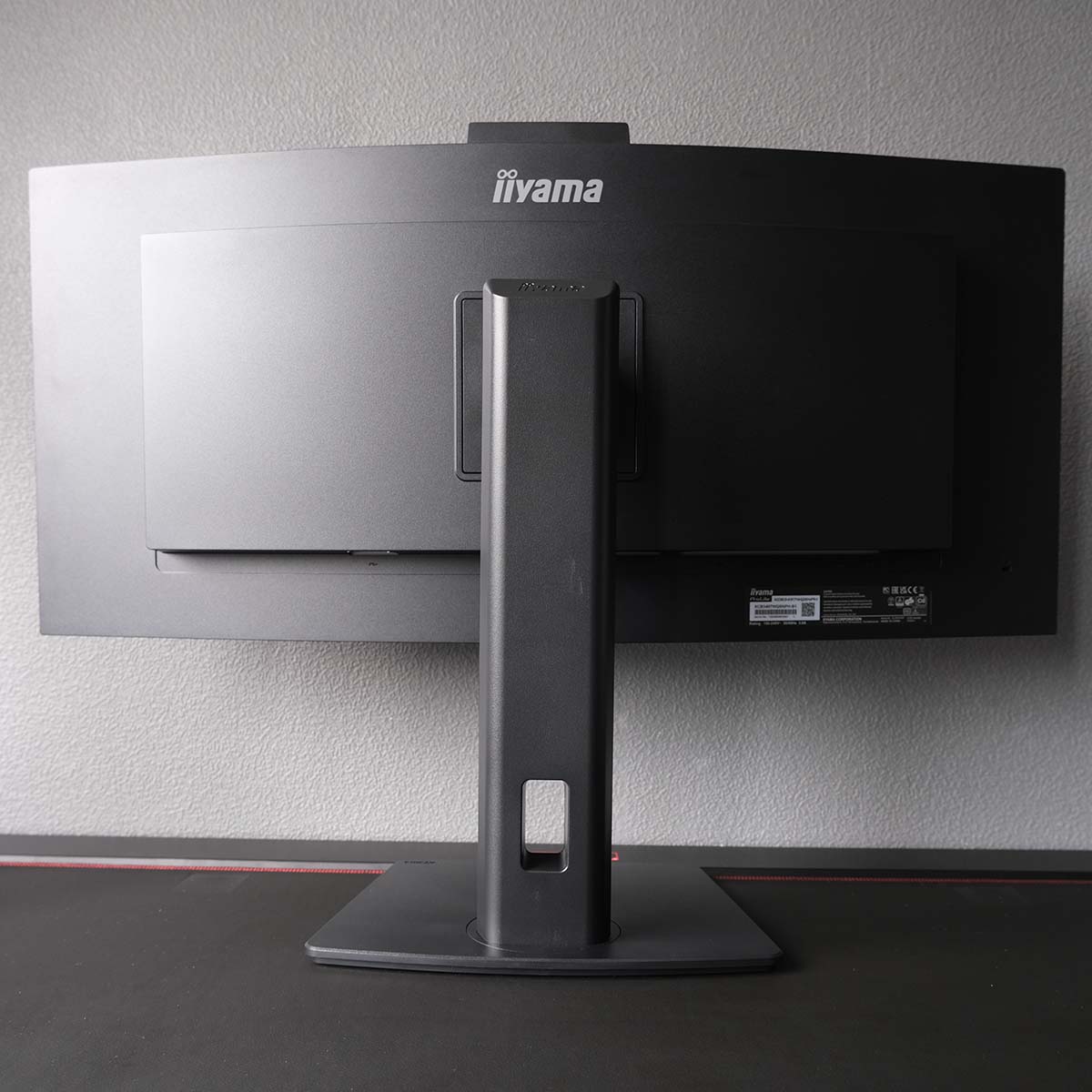
Unpacking XCB3497WQSNPH-B1 from its recyclable packaging, the monitor arrives in four parts: base, arm, mount, and panel. Attaching them together isn’t difficult and doesn’t require any tools, meaning I was able to build the display in just a few minutes.
It’s possible to VESA mount the monitor, but opting for the stand does provide a wealth of control. There’s 15cm height adjustment, alongside 90° left-to-right swivel, and 28° worth of tilt. Impressively, the screen is a rarity among ultrawide monitors and can also rotate into a portrait orientation.

The cable grommet within the arm sits fairly low, resulting in cables visibly dangling from behind XCB3497WQSNPH-B1. This isn’t a deal-breaker, but can look unsightly if you fill up the majority of ports with wired connections.
As one should expect from a monitor in this price bracket, iiyama builds XCB3497WQSNPH-B1’s chassis from plastic across the board. That said, none of the construction feels cheap, with nary a creak or wiggle. I’m particularly happy to see a large quadrilateral base in place of space-invading perpendicular legs.
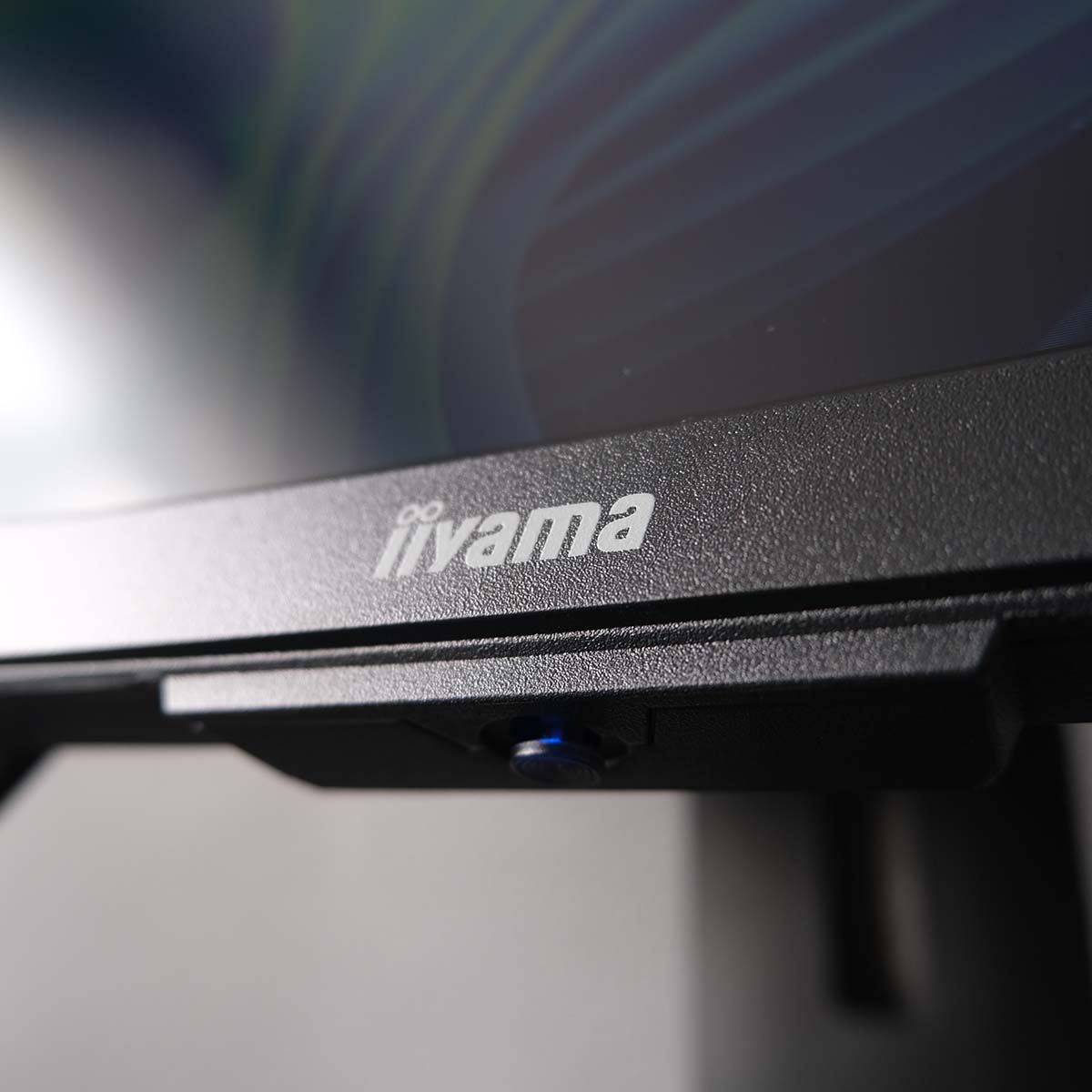
Underneath the XCB3497WQSNPH-B1’s chin, you’ll find a four-way joystick for controlling the monitor’s OSD (On Screen Display). While pressing the stick once will open up the wider menu, iiyama programs three quick functions, namely picture modes, display inputs, and volume to left, up, and right, respectively. Sadly, there isn’t a way to customise these preset functions.
Navigating the OSD is quick and simple. In addition to the usual assortment of brightness and colour controls, you can also control whether to enable USB charging while the monitor is in standby mode, tweak the speed of USB-C ports, decide which data upstream (USB-B or USB-C) display inputs should use, and more.
Screen
On to the main event, XCB3497WQSNPH-B1 packs a 34in VA panel sporting a native UWQHD (3440×1440) resolution, maximum refresh rate of 120Hz, and 1500R curve. This specs combination makes for an ideal workhorse monitor, providing great clarity, responsiveness, and of course plenty of screen real estate.
Expanding your FOV from a typical 16:9 display to a 21:9 model like XCB3497WQSNPH-B1 makes multitasking far easier. Having two windows open side-by-side, it’s far easier to parse the contents of each without either feeling constrained. Speaking as someone that frequently works with multiple applications open at one time, the extra screen space is a godsend. In the words of a certain Alan Johnson, get a document up on this baby and you are seriously looking at that document.
UWQHD effectively provides a dual-screen experience in a sleeker, simpler package, affording you an extra 880 horizontal pixels than a single QHD monitor. Operating at this resolution on a 34in panel, you’re working with 110PPI (Pixels Per Inch). As such, text is crisp to the eye and other screen elements are plenty sharp.
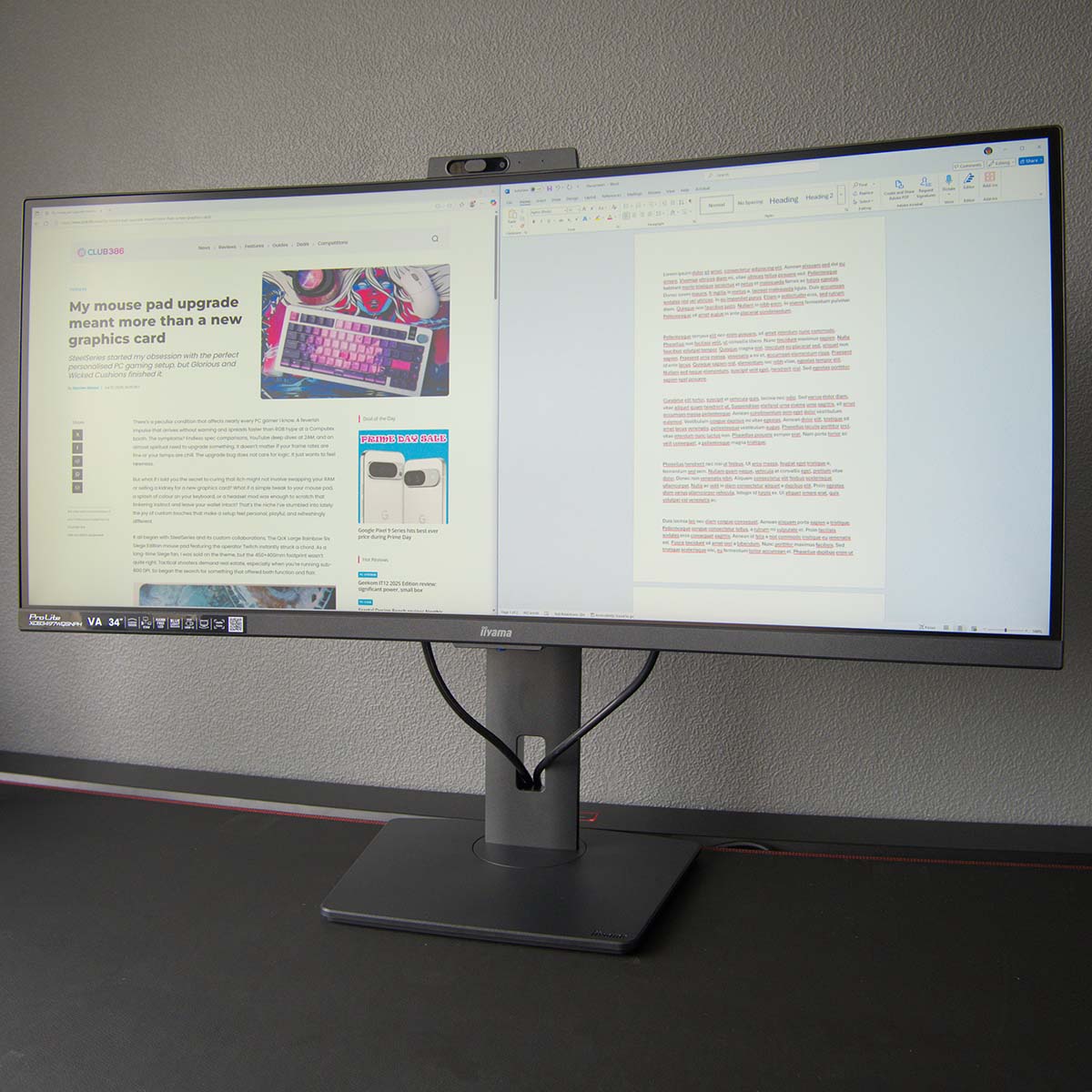
Shifting to 120Hz from a more-typical refresh rate of 60Hz feels like freeing yourself from an invisible weight. System interactions are tangibly more fluid, as your mouse and windows glide across the screen with newfound ease. This may not sound like a massive benefit on paper, but it’s difficult to settle for anything less once you’ve experienced this feeling first-hand.
As much as the VA panel is largely solid, the technology isn’t without flaws. The most notable issue I experience on this screen is colour shifting while scrolling, particularly against dark backgrounds, with white text turning a smeary yellow and other elements lagging behind as the LCD tries to keep pace. The degree to which this bothers you will vary person-to-person, but I found it distracting.
XCB3497WQSNPH-B1, like the vast majority of modern displays, is flicker-free and also supports blue light reduction modes. The latter setting has three modes to choose from, with varying severity. Concentrating on a screen can be a straining experience, but this particular option allows me to crack on without having to reach for my eye drops quite as frequently.
Ports
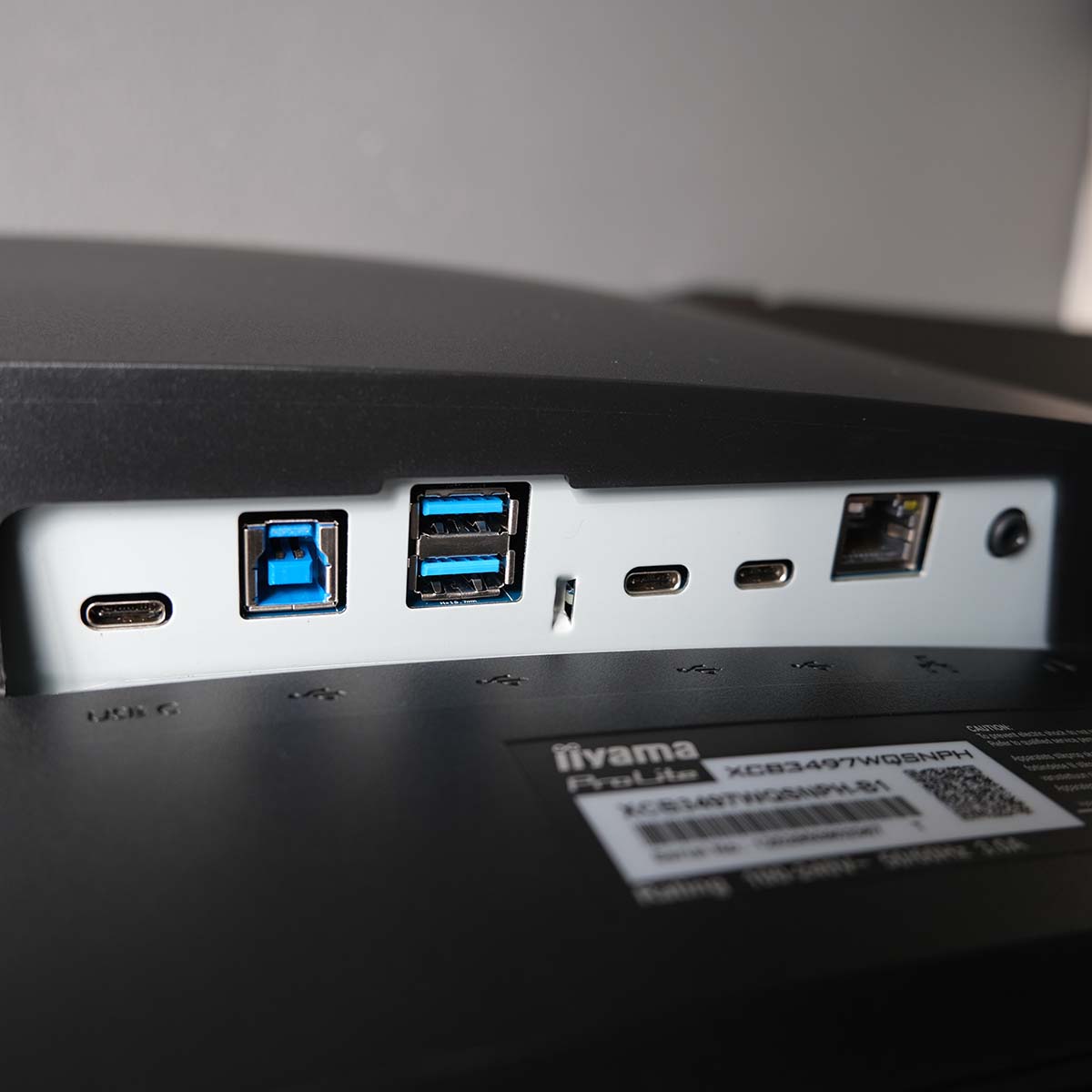
You’ll find a plethora of ports on the underside of XCB3497WQSNPH-B1, providing ample connectivity and convenience that both your laptop and desktop can benefit from. Chief among them is a KVM switch, which makes it easy to swap between systems while using the same set of USB peripherals.
Up to four devices can connect to XCB3497WQSNPH-B1 through four built-in USB ports, composed of two Type-A and two Type-C, each running at 5Gb/s. Offering an equal amount of both connector types is a welcome touch, and means plugging in a mouse, keyboard, and other modern mainstays of your desk is fuss-free.
While a USB-B upstream takes care of desktop communications, iiyama pulls out all the stops for XCB3497WQSNPH-B1’s USB-C dock for laptops. This single port provides a data connection to the KVM switch, DP Alt mode running at full resolution and refresh rate, 98W of power delivery, as well as networking if you feed an Ethernet cable into the display’s RJ45 header.
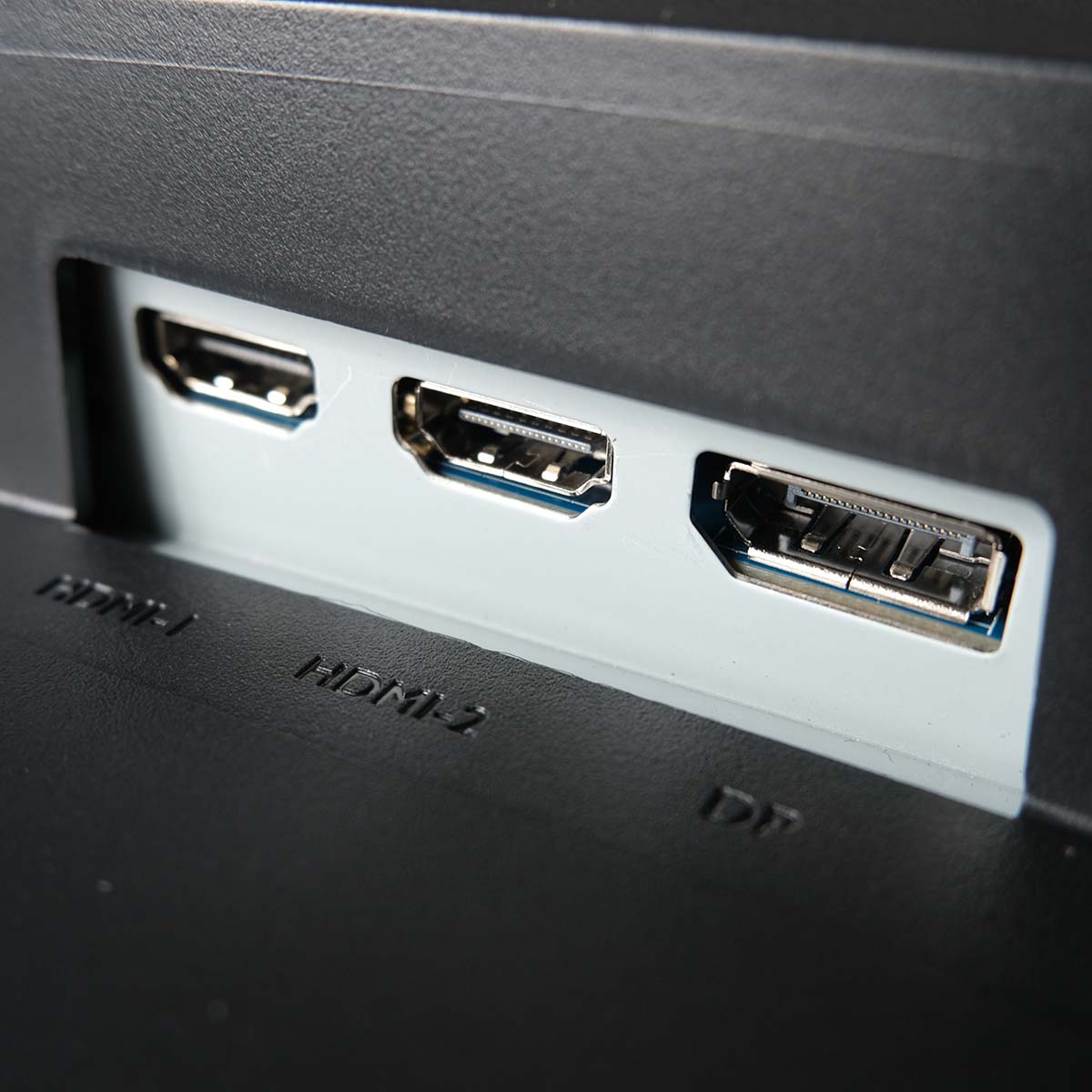
The only blemish on this otherwise spotless assortment are the HDMI ports which fall short both in terms of bandwidth and consistency. XCB3497WQSNPH-B1 features one HDMI 2.0 input and another HDMI 1.4 connection. Neither can drive the monitor at full speed, capping at UWQHD/100Hz and QHD/120Hz, respectively.
Frustrating and confusing as this HDMI configuration can be, the DisplayPort 1.4 and USB Type-C both have the bandwidth necessary to make full use of XCB3497WQSNPH-B1’s resolution and refresh rate. This makes the limitations of the less-capable ports easier to forgive, but I’d like to see iiyama adopt HDMI 2.1 on future monitors like this even if we have to sacrifice two inputs for one.
Webcam
As more of us work from home, having a webcam and microphone is essential for calls and meetings with colleagues across the world. Knowingly, iiyama attaches a built-in webcam and microphone to XCB3497WQSNPH-B1.
Sitting at the top of the monitor, a plastic shroud houses both the camera and mic. This position looks and feels more natural than looking down at a laptop, making for a more comfortable call experience for both you and the recipient. After all, nobody likes neck strain or an unflattering angle.
XCB3497WQSNPH-B1 features a privacy shutter for the webcam that satisfyingly locks into place with a tactile click. However, this doesn’t serve as a hardware kill switch for the microphone or cover the IR camera used for autofocus. I appreciate that this design affords some privacy, but I’d like to see iiyama go further with a more encompassing cover in a future revision of this monitor.
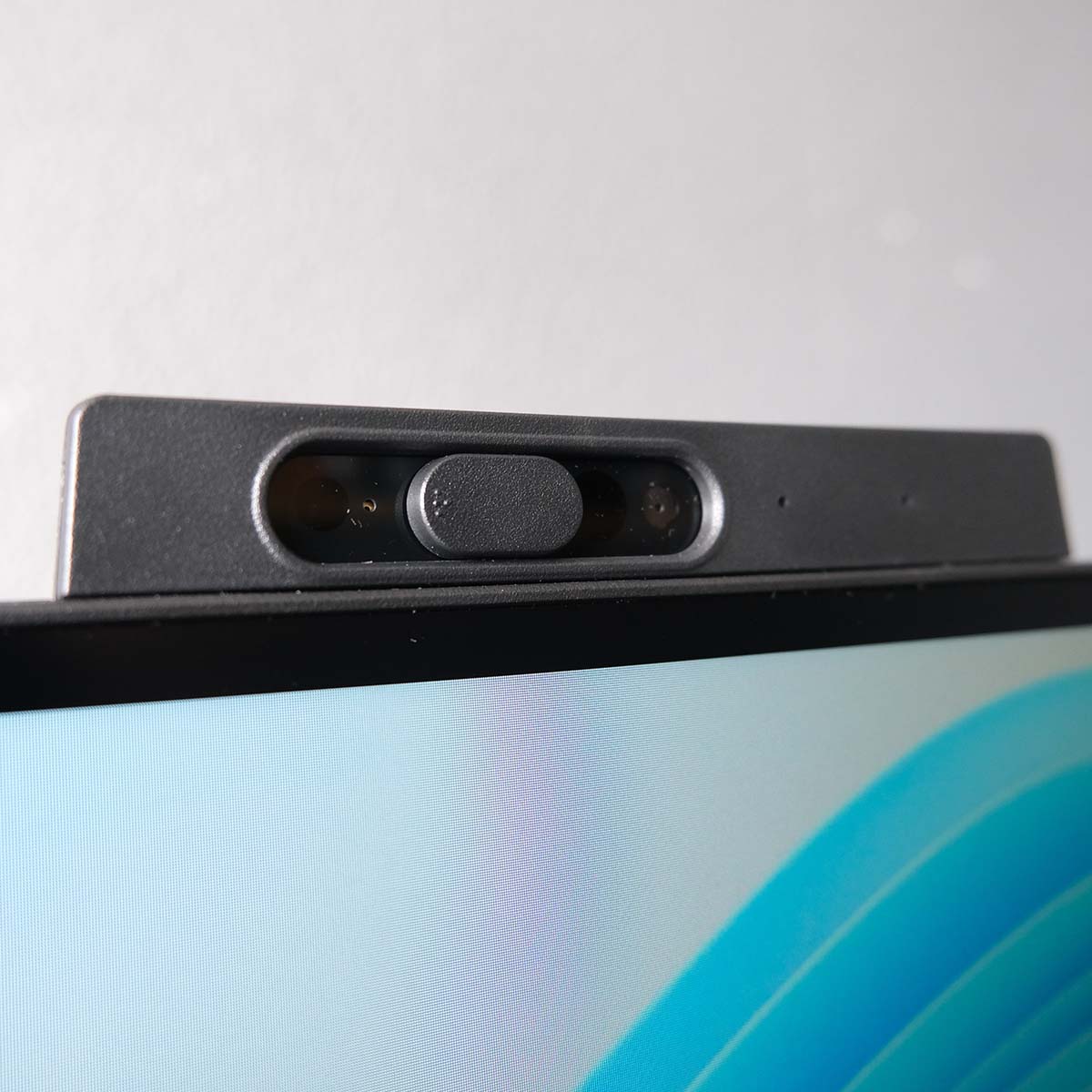
Putting the webcam, microphone, and built-in speakers to the test through numerous call, I find the setup to be largely solid. The 5MP camera does a good job of capturing my face and showing off my office, while the microphone captures my voice clearly if perhaps a touch thinly were I to nitpick.
The speakers are the weakest point by far, but I didn’t expect much from them considering there’s only 5W running through the two tweeters. They’re useful in a pinch, but I’d recommend sticking with earbuds or a headset if you can help it (all the more so if you’re in a shared office environment).
Regardless of whether you’re working from your PC or laptop, the webcam and microphone shift across systems through the KVM switch. This means you can conveniently and quickly log in to either system using Windows Hello.
Colours
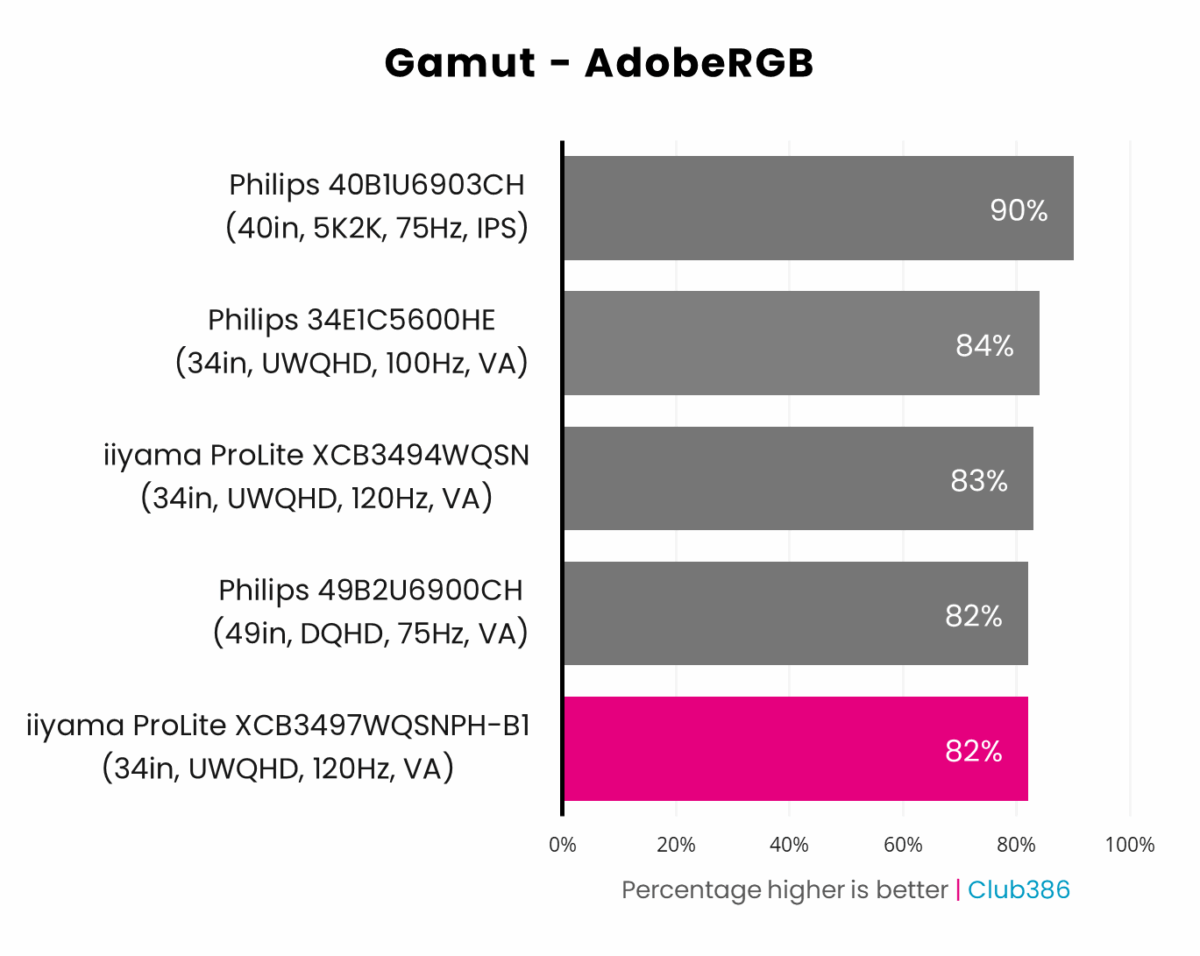
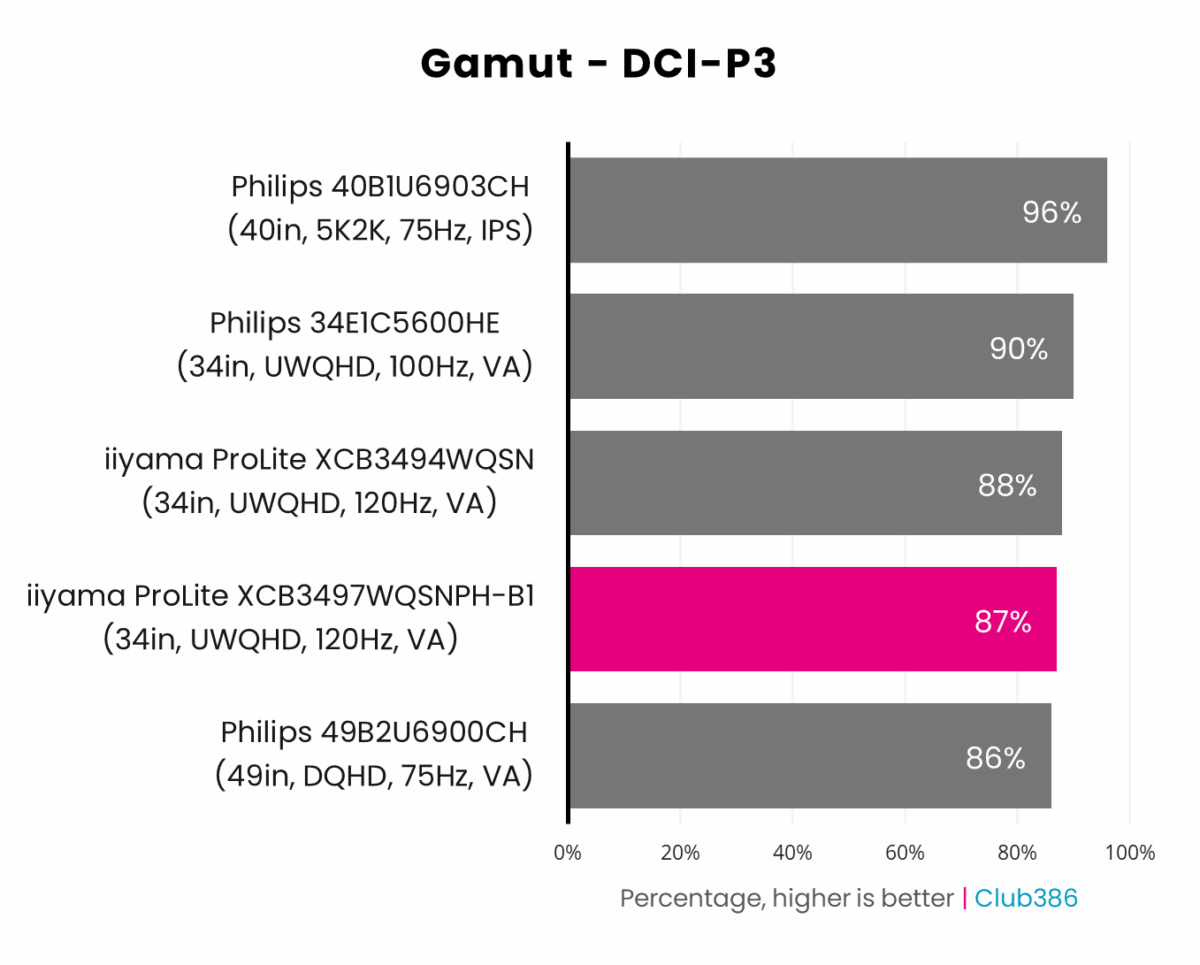
Coverage of AdobeRGB and DCI-P3 gamuts on XCB3497WQSNPH-B1 is practically identical to similar iiyama ProLite offerings we’ve tested, namely XCB3494WQSN. There’s just a 1% difference between the monitors in either colour space, which one could chalk up to margin of error or panel deviance.
Though IPS remains the clear choice for those in search of a monitor that comes closest to displaying all the proverbial colours of the rainbow, these are solid results for a VA screen. Realistically, the majority of web and work materials fall into the sRGB colour space and XCB3497WQSNPH-B1 easily accommodates 100% of that gamut.
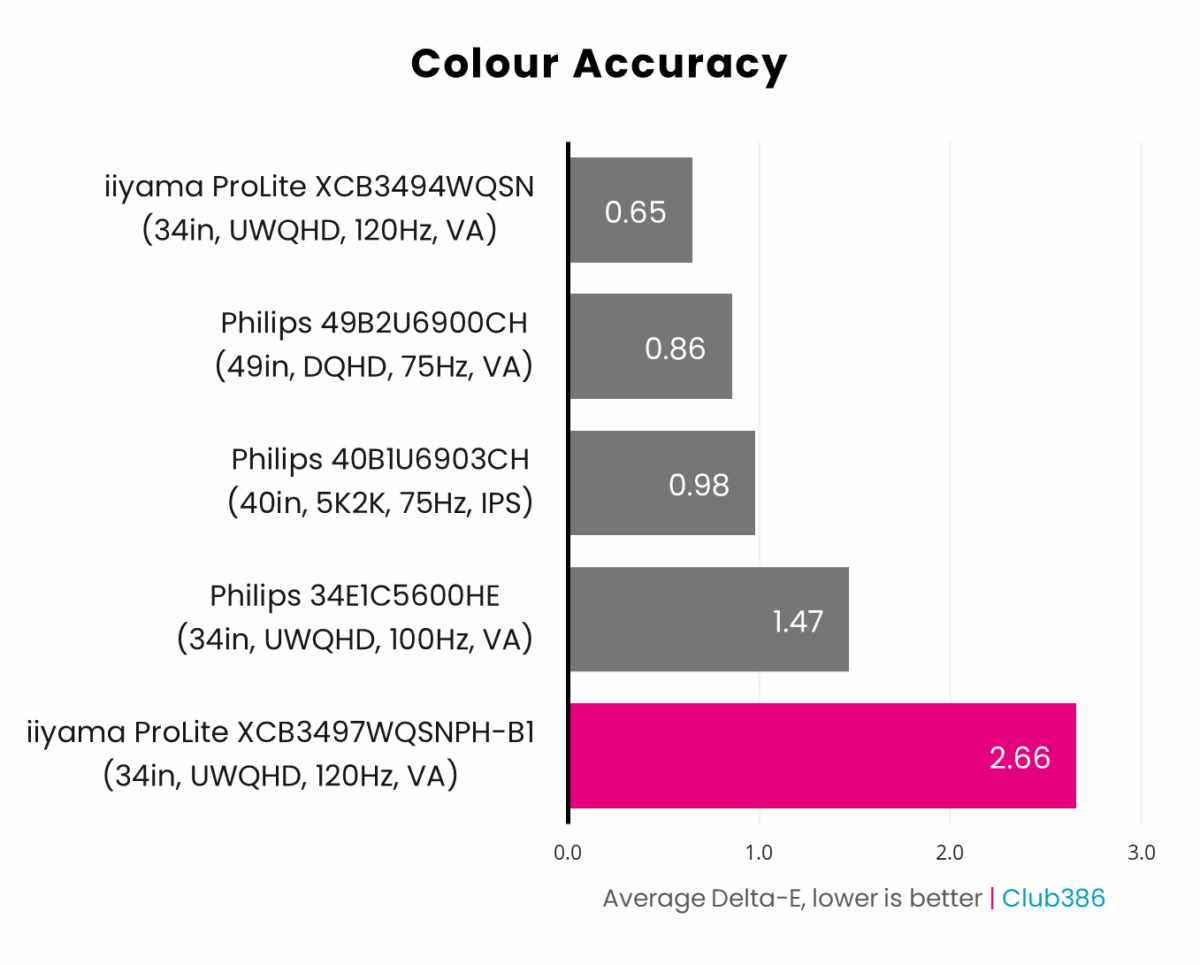
With an average Delta-E of 2.66, peaking at 4.88 due to an unruly blue, XCB3497WQSNPH-B1 isn’t suitable for colour-sensitive work without calibration. To the untrained eye, though, this result won’t cause any discomfort or problems.
Though XCB3497WQSNPH-B1 sits at the bottom of the chart above, the display is still more accurate than several more-expensive monitors we’ve tested in the past. For example, even with a QD-OLED panel under the hood, MSI MPG 272URX is more egregiously inaccurate out of the box.
Brightness
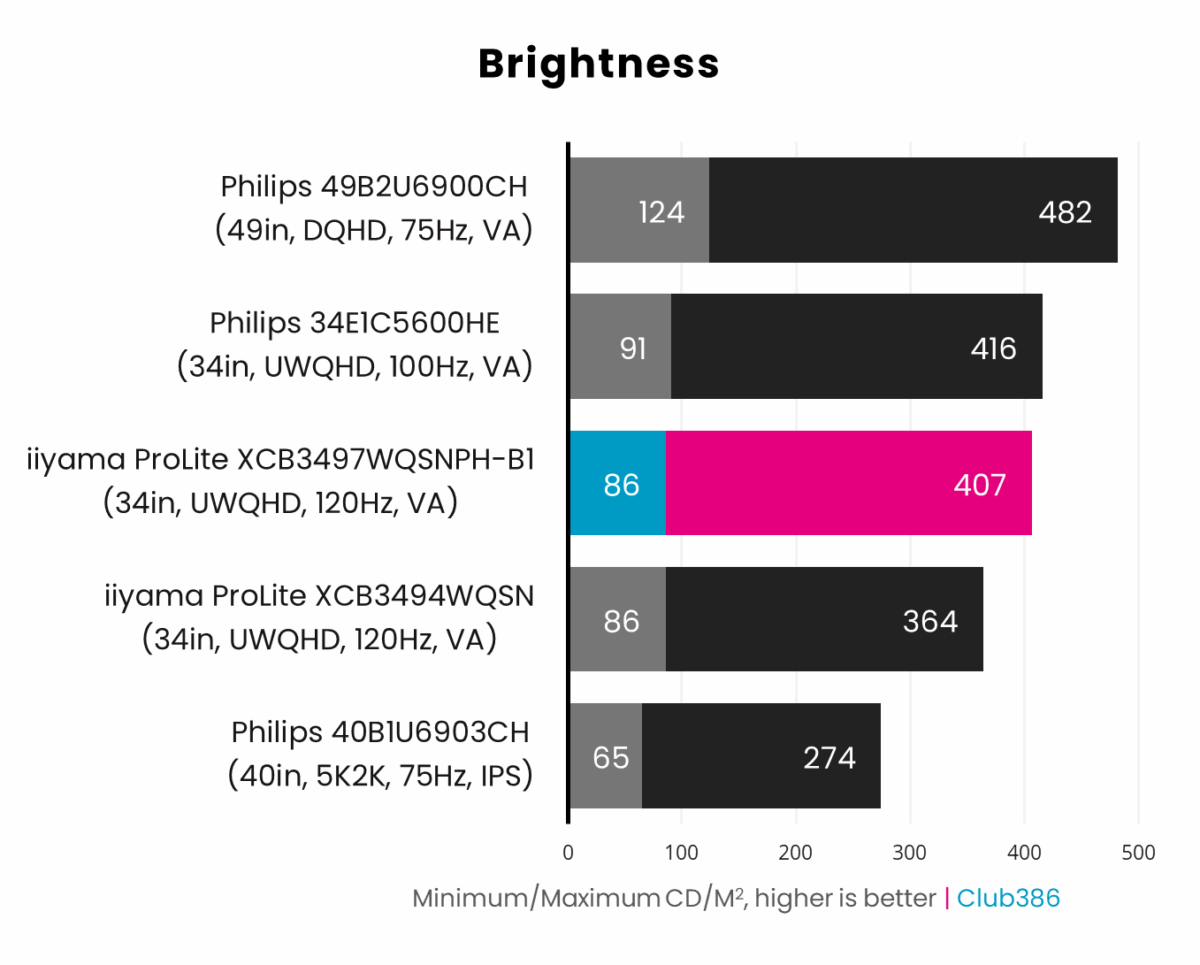
iiyama ships XCB3497WQSNPH-B1 set to 70% brightness, translating to around 285nits, but the monitor is capable of getting much brighter with output peaking at 407nits. Truthfully, running at 100% does feel almost-blinding in all-but already brightly lit environments. All the same, it’s nice to have the extra luminance in reserve.
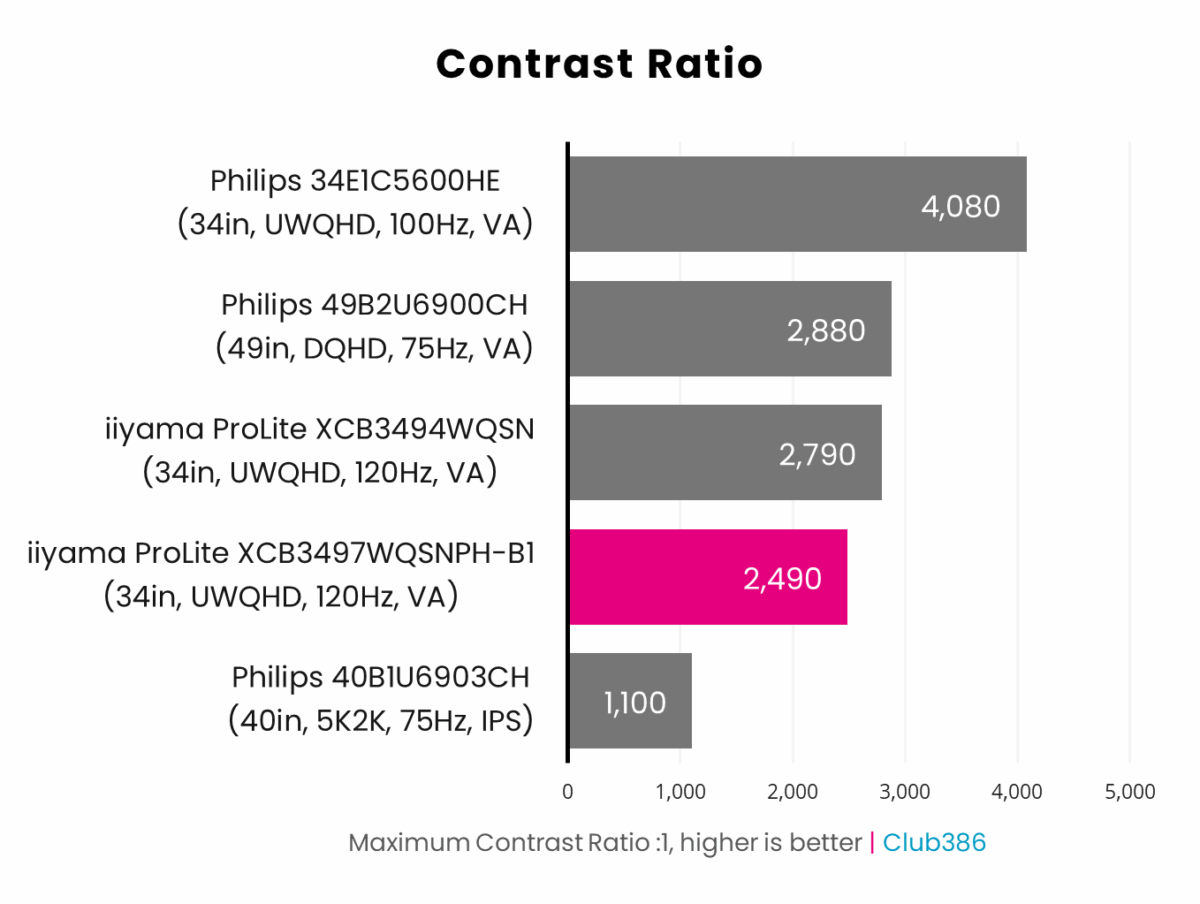

As you’d expect from a VA panel, contrast and black levels are non-issues. While XCB3497WQSNPH-B1 is by no means a class leader in this regard, a ratio of 2,490:1 makes for a noticeably richer viewing experience than IPS alternatives
Uniformity
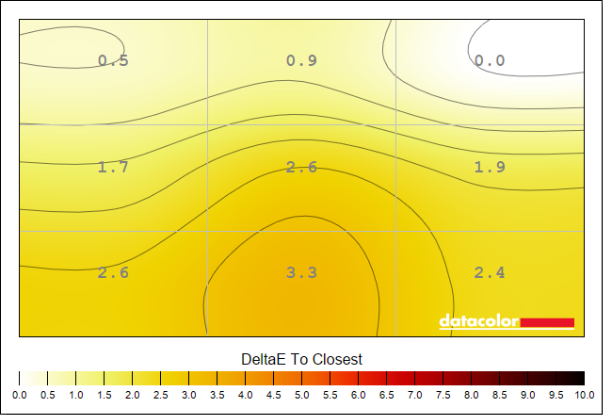
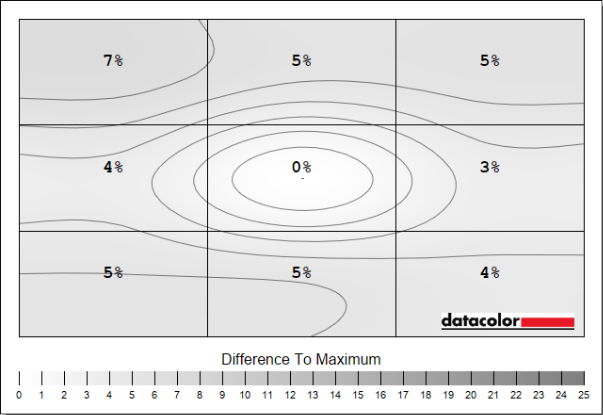
XCB3497WQSNPH-B1 keeps both colour and luminance uniformity within respectable ranges. Keeping consistency across such a large panel can be difficult but iiyama has risen to the challenge with good results.
Power
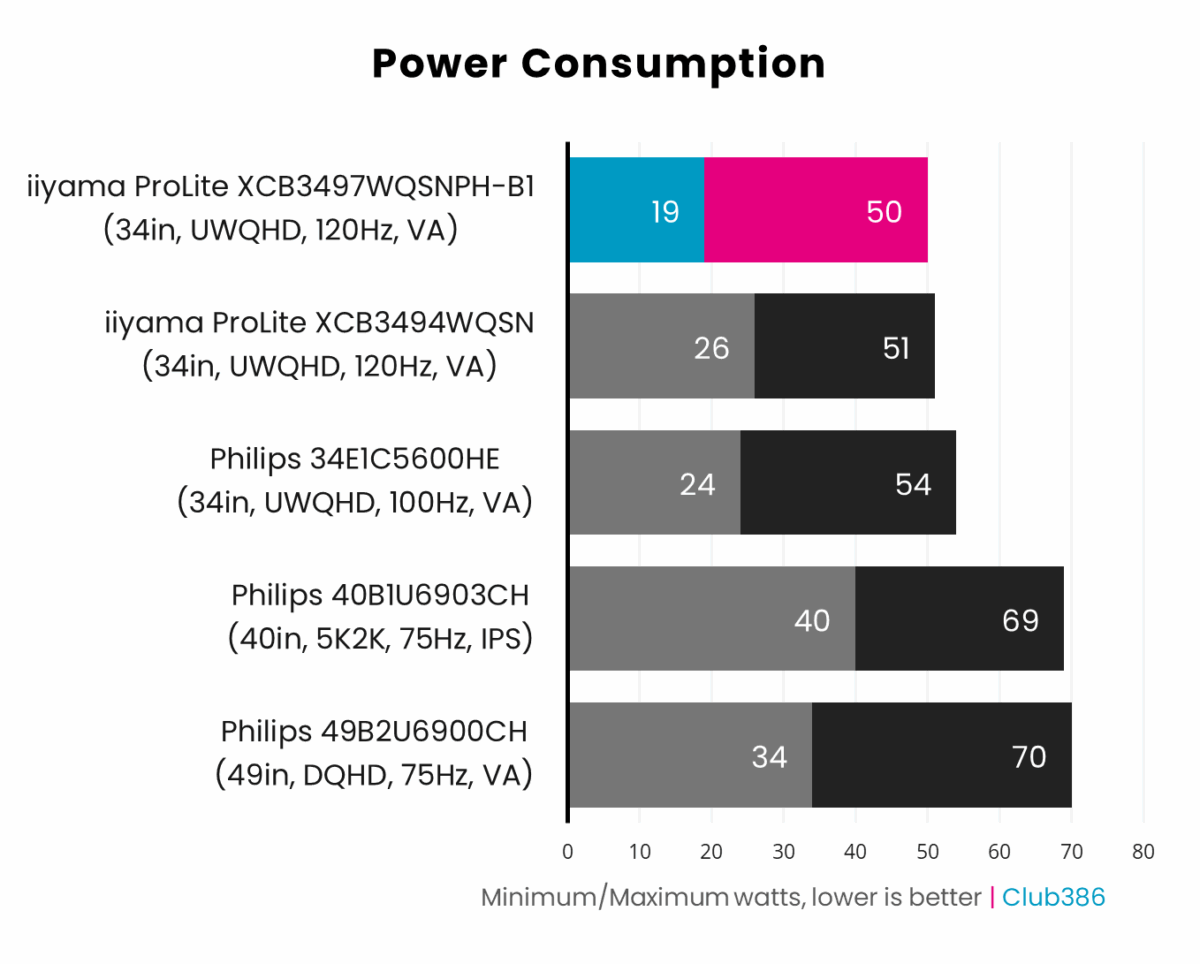
Going toe-to-toe with other business-oriented monitors, XCB3497WQSNPH-B1 tops our chart with the lowest power consumption. The display enjoys this accolade on both ends of the spectrum, consuming 19W at its dimmest and 50W at its brightest.
Conclusion
Having the right monitor to complement your workflow can make all the difference when it comes to productivity, and I see XCB3497WQSNPH-B1 proving a good fit for many offices. It ticks all the boxes that modern displays should, providing a comfortable viewing experience while also making it easy to use devices across both desktop and laptop.
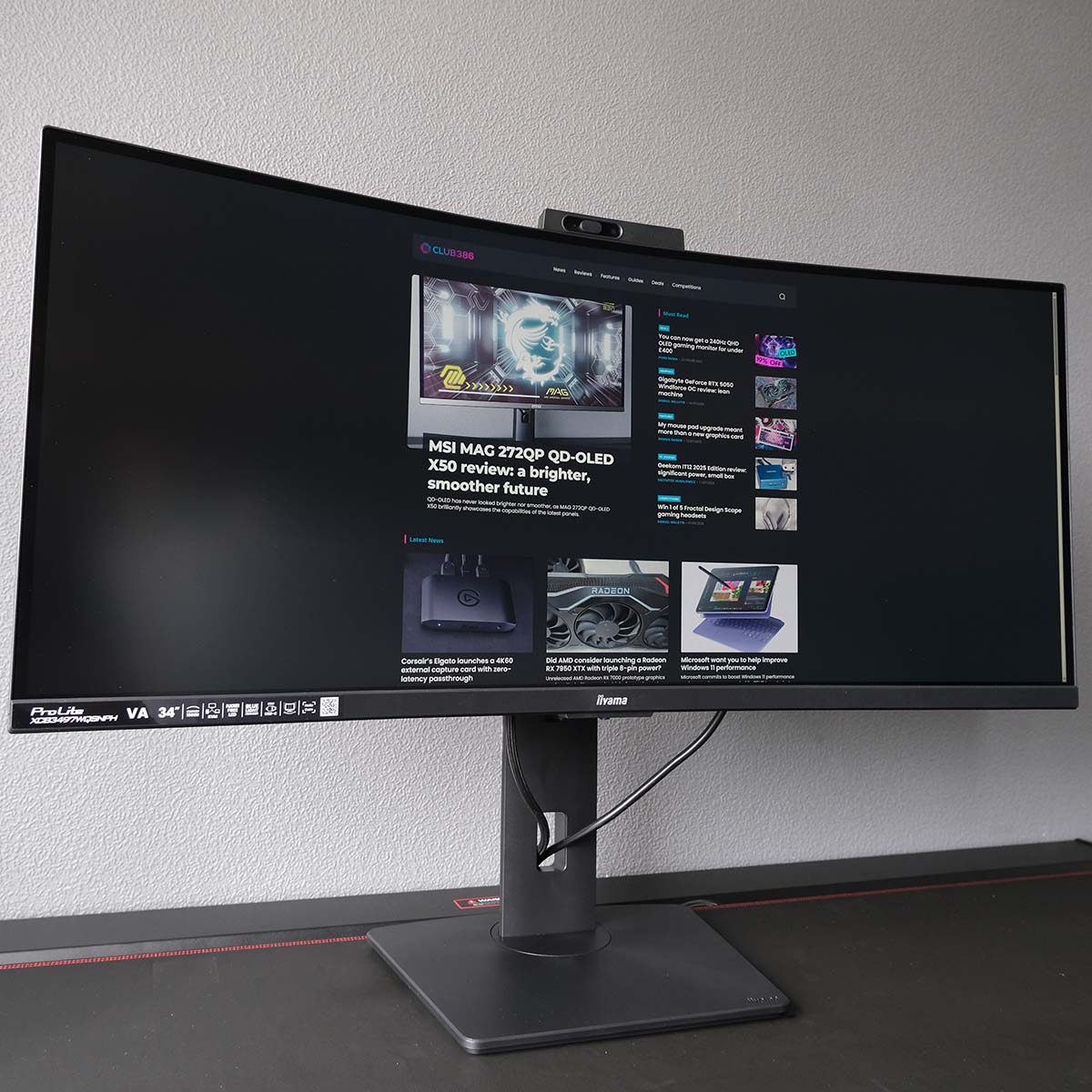
Retailing for £380 on the consumer market, this is a fair price considering the feature set on offer. Should you not need the built-in webcam, iiyama does offer a variant of this monitor (XCB3497WQSNP-B1) for £300. Regardless of which you’d prefer, they each come with five-year warranty.
Providing you can forgo some colour accuracy, either model makes for a solid addition to a work setup in my eyes.

